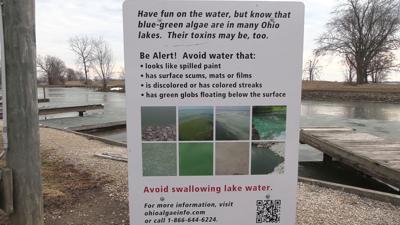CELINA, Ohio (WLIO) – Grand Lake St. Marys is showing signs of improvement, with microcystin toxin levels in 2024 significantly lower than the average of previous years, according to meeting notes from the Grand Lake St. Marys State Park.
Microcystin toxins are produced by algae in the lake, which release harmful substances when they die. These algae blooms can cause the water to resemble spilled paint and often lead to advisories urging people to avoid contact with the water. Officials have dedicated significant time and resources to improving water quality and maintaining a cleaner lake.

Grand Lake St. Marys is showing signs of improvement, with microcystin toxin levels in 2024 significantly lower.
"This has been about a 14 year project. We've tried many different things, and we've found that wetlands works the best to remove the nutrients that the harmful algal blooms actually feed on. So any opportunity we have to purchase land and install new wetlands to help remove those nutrients, makes the lake a little bit better," said David Faler, park manager at Grand Lake St. Marys State Park.
Officials also encourage the public to contribute to the lake’s health by being mindful of lawn treatments and keeping the area free of litter.











